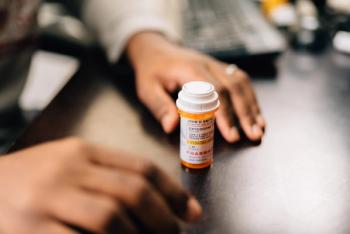
- November 2019
- Volume 85
- Issue 11
Drug Shortages Have Monstrous Effects on Health Care
The Food and Drug Administration Safety and Innovation Act was signed into law in 2012, but the crisis continues.
The drug shortage crisis has dominated health care over the past decade. In an attempt to subdue the crisis, President Barack Obama signed the Food and Drug Administration Safety and Innovation Act (FDASIA) into law on July 7, 2012,1 which strengthened the agency’s abilities to advance and safeguard public health.1
Despite the added authority from the act to collect user fees from industry, enhance the safety of the drug supply chain, increase stakeholder involvement in FDA processes, and promote innovation to speed access to effective and safe new drugs, drug shortages remain a monstrous obstacle for health care personnel and patients.2 A multitude of factors can cause these shortages, including manufacturing issues, natural disasters, raw material shortages, and regulatory delays.2
These shortages affect patient care by causing medication errors, compromising or delaying medical procedures, and requiring replacement of first-line therapies with alternative medications.3 In a survey from the American Society of Health-System Pharmacists, 61% of hospitals reported that the shortage of small-volume parenteral saline solution was having a severe impact on daily operations and patient care.2 In a follow-up survey, 75.6% of hospitals claimed that the impact of the shortage was severe and 67.8% reported that the injectable opioid shortage was continuing to have a severe impact on daily operations and patient care.2 Close to 8% of these hospitals also reported a safety event resulting in at least temporary harm to patients.2
Efforts to combat the shortages are as costly as they are complex. For 2013, an estimated $209 million was spent for more expensive substitutes.4 Unfortunately, unlike typical economic models, the demands for drugs, saline, sterile water, etc, do not always necessarily drive the supply.2 Health care providers must be aware of the latest shortages and how they may affect patient care so that appropriate mitigation strategies can be implemented promptly.
HARDEST HIT AREAS
As of July 5, 2019, 225 drugs were reported to have a shortage status. Recent critical shortages have included sterile water for injection, local anesthetics, electrolytes, cardiac emergency drugs, and generic chemotherapy agents.2 In 2010, intravenous (IV) oncologic medications topped the list.3 Cytarabine, an agent for which there is no substitute, was a particularly worrisome shortage. Oncologists reported that hospitals had to delay treatment, give less-effective therapies, or ration their supply.3
Drugs considered mainstays of therapy, such as electrolytes, morphine, and norepinephrine, also have been hard hit. The results of an FDA study done in collaboration with the University of Utah’s Drug Information Services show that more than half of the listed medications on the drug shortage list were for acute care.5 Certain formulations of pain medications have also fallen victim to the drug shortage epidemic, resulting in overdoses of drugs such as fentanyl and ketamine.5 Unfortunately, these shortages go beyond life-saving medications. With the shortage of IV bags and solutions, the issue is now encroaching on medication delivery.
OVERCOMING DRUG SHORTAGES
It is essential that we continue to recognize that drug shortages have been a long-standing problem and continue to be an issue and that health care personnel consider shortages and work collectively to prevent future ones. Ninety percent of hospitals reported having experienced at least 1 drug shortage within the past 6 months that negatively affected patient safety.6 With a never-ending cycle of shortages, management of the issue has become particularly complex and requires a multifaceted approach.
Under Title X of the FDASIA, the FDA is required to maintain and communicate an up-to-date list of drugs determined to be in shortage.1 Pharmacy personnel must aid in the distribution of this information throughout the health care industry on a continuing basis; however, pharmacist staff often bear this burden.
Institutions, such as Cleveland Clinic, see no resolution to the turmoil in the near future and have plans to build a 503B-compliant compounding facility that would allow them to sell drug products to other hospitals.7 Intermountain Healthcare, Ascension, SSM Health, and Trinity Health are also stepping up and working with the US Department of Veterans Affairs to pool the resources of their collective 450 hospitals and create their own generic drug company in an effort to combat the shortages and rising drug prices.7 Furthermore, states are taking an interest in legislation that would allow them to import more drugs from neighboring countries.7
What this growing movement ultimately highlights is that institutions are getting restless for a solution to the seemingly endless crisis. The wasted energy and time spent to minimize the impact of these shortages cannot be underestimated. Thus, we must strive to continue the fight against drug shortages and shed light on the detrimental effects that the issue continues to have on patient care.
REFERENCES
- Food and Drug Administration Safety and Innovation Act (FDASIA). FDA website. www.fda.gov/regulatory-information/selected-amendments-fdc-act/ food-and-drug-administration-safety-and-innovation-act-fdasia. Updated March 28, 2018. Accessed October 1, 2019.
- Chrzan J. Drug shortages impact hospitals, pharmacies, patients and the economy. Healthcare Packaging. March 13, 2019. healthcarepackaging.com/article/drug-short- ages-impact-hospitals-pharmacies-patients-and-economy. Accessed October 1, 2019.
- Ventola CL. The drug shortage crisis in the United States: causes, impact, and management strategies. P T. 2011;36(11):740-757.
- Fox ER, McLaughlin MM. ASHP guidelines on managing drug product shortages. Am J Health Syst Pharm. 2018;75(21):1742-1750. doi: 10.2146/ajhp180441.
- Chen SI, Fox ER, Hall MK, et al. Despite federal legislation, shortages of drugs used in acute care settings remain persistent and prolonged. Health Aff (Millwood). 2016;35(5):798-804. doi: 10.1377/hlthaff.2015.1157.
- Cooley H, Leventis C. Best practices for hospitals and health systems in an era of drug shortages. McKesson website. mckesson.com/blog/preparing-for-drug-shortag- es/. Published July 9, 2019. Accessed July 9, 2019.
- Kacik A. Worsening drug shortages leave providers scrambling for alterna- tives. Modern Healthcare. May 21, 2018. modernhealthcare.com/article/20180521/ NEWS/180529993/worsening-drug-shortages-leave-providers-scrambling-for-alter- natives. Accessed October 2, 2019.
Articles in this issue
almost 6 years ago
Can You Read These Rxs? (November 2019)almost 6 years ago
Walmart Essay Winner: A Community Pharmacist's Impact Can Go a Long Wayalmost 6 years ago
Descovy from Gilead Sciences Incalmost 6 years ago
November 2019 Generic Product Newsalmost 6 years ago
OTC Focus Case Studies: Eye Problemsalmost 6 years ago
When Is a "Whoop" Not a Cheer?almost 6 years ago
Devices, Not Just Doctors, Should Engage Patientsalmost 6 years ago
Implementing Critical Pathways of Clinical Care at Moose PharmacyNewsletter
Stay informed on drug updates, treatment guidelines, and pharmacy practice trends—subscribe to Pharmacy Times for weekly clinical insights.



















































































































































































































